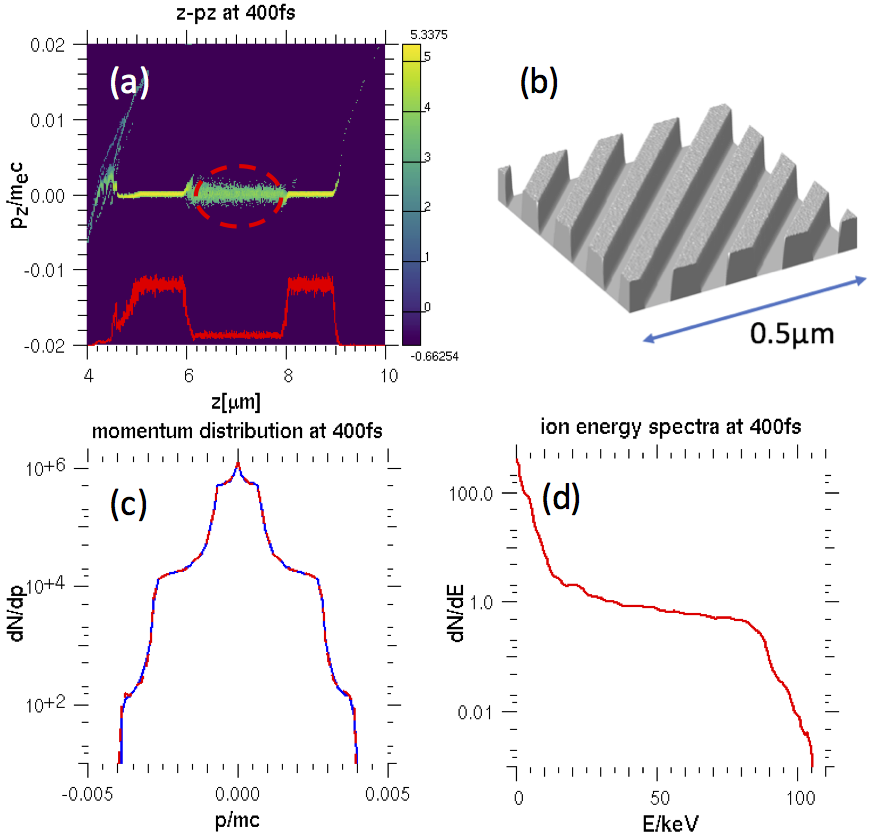Gary Grim (17-ERD-110)
Executive Summary
We are exploring a new capability for obtaining nuclear data in regimes previously inaccessible by developing an experimental platform that utilizes a small volume of dense hot plasma to produce high-energy-density products. This work is relevant to DOE goals in energy and nuclear security, which rely on an understanding of matter under extreme conditions.
Project Description
Our current understanding of a large range of astrophysical phenomenon depends on extremely low nuclear reaction rates. The challenge facing the measurement of these reaction rates in the laboratory is to achieve a significant signal over background at ion “temperatures” relevant to the astrophysical domain. The traditional approach is to use a high-intensity, low-energy accelerator to produce a beam that impinges on a solid target. However, after running for decades, this produces only tens of events well separated from the remaining background. We intend to circumvent this by developing a new platform that utilizes a small volume of dense, hot plasma, so measurable products will result in conditions similar to those found in astrophysical objects such as the stars. Intense, short-pulse lasers can create such plasmas, but experiments on these lasers have thus far concentrated on either maximizing the number of megaelectronvolt protons or trying to uniformly heat a solid density. While these approaches are useful in that they result in plasma parameters that are relatively easily measured, both suffer from being extremely inefficient methods of heating a target. To address this issue, we will develop a new approach that takes advantage of the region of the target where most of the laser energy is deposited: near the laser–solid interface and behind the shock wave launched into the target. Up to now, this area has largely been ignored because of the large spatial and temporal gradients inherent in the region, which complicate experimental inference. We intend to design targets that combine known, high cross-section reactions with spectroscopic tracers to diagnose plasma conditions producing reactions of interest.
Our objective is to prove the viability of a new platform for high-energy-density science by targeting important astrophysical nuclear reactions with low cross-section reactions and then designing a well-diagnosed experiment to determine the reaction rates in solid-density, kiloelectrovolt plasmas. We intend to diagnose poorly known nuclear reaction rates in this region by simultaneously diagnosing well-known nuclear reaction rates. This involves quickly heating finite volumes of a bulk target composed of the isotopes of interest to provide “large” signals of the particular fusion reaction and then measuring the rate of these reactions. The interaction of short-pulsed lasers with material have been of great interest in the last decade with the advent of high-brightness laser pulses, which revealed the phenomenon of laser ion acceleration where ions are accelerated to hundreds of megaelectronvolts of kinetic energy. In general, simulations predict that for the region near the laser–solid interface, plasmas in the target with twice solid density and ion temperatures approaching several kiloelectronvolts are created with just modest energy increases over these experiments. We recognize these conditions as approaching the astrophysically interesting regime for a number of nuclear reactions that have represented a challenge for experimentalists to measure. We will use this relatively unexplored aspect of intense laser and plasma interactions, and optimize not for maximum proton (ion) energies, as nearly all work to date has done, but rather for heating behind the shock front. This regime is also different from the so-called “isochoric heating” regime, where the goal is to create a homogenous single-electron temperature and density useful for opacity and equation-of-state experiments. Here, we are exploiting the fact that a large amount of energy can be deposited in a short distance behind the ion shock front, and understand that we give up homogeneity to perform the experiment in the hottest part of the target. If this project is successful, we expect to have developed a platform to facilitate the study of previously inaccessible nuclear reactions using short-pulse laser-driven experiments. The overarching goal of this project is to prove the viability of a new method for measuring important reaction rates. This could open the door to a number of cross sections that currently have been inaccessible.
Mission Relevance
By developing new capabilities for obtaining nuclear data in regimes previously inaccessible, this work supports the Laboratory’s core competency in high-energy-density science, as well as DOE goals in energy and nuclear security, which rely on an understanding of matter under extreme conditions of temperature and pressure, such as those found in the fusion reactions that power the stars.
FY17 Accomplishments and Results
In FY17 we (1) completed initial particle-in-cell simulations exploring different short-pulse laser drive conditions, and (2) attempted, using these simulations, to optimize plasma conditions required to induce nuclear reactions of the driven material.
Publications and Presentations
Wilks, S. C., et al. 2017. "In situ Neutron-Based Diagnostic of Solid Density Plasma and MeV Ion Beams Created by Collisionless Shocks." 47th Annual Anomalous Absorption Conference Florence, Oregon, 11–16 June 2017. LLNL-PRES-732672.
   





